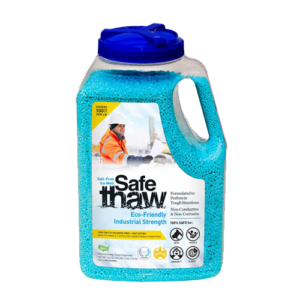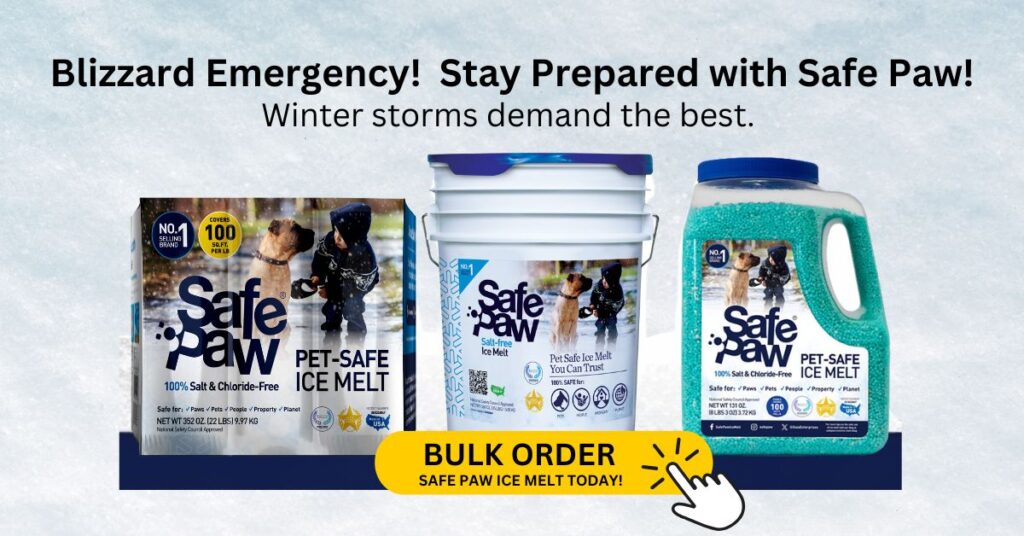How to Tell If Damage to My Concrete Is from an Ice Melter, the Seal, or Poor Concrete Quality
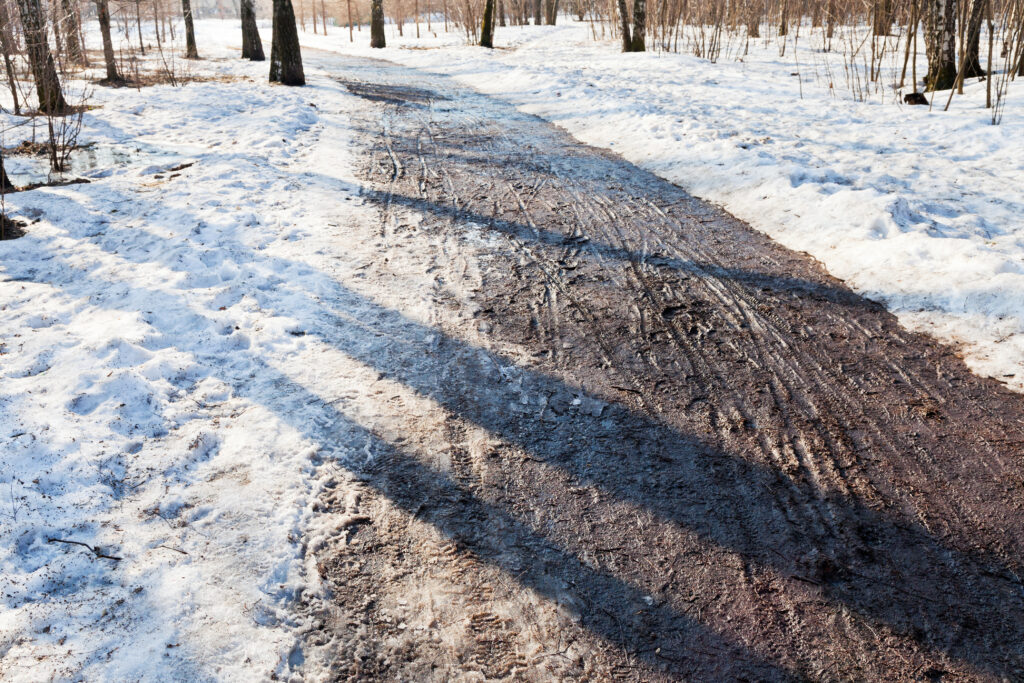
When winter ends and your driveway or walkway looks flaked, cracked, or pitted, it’s natural to ask: Was it the ice melt I used? But determining the true cause of concrete damage isn’t always straightforward. It could be due to ice melters, lack of proper sealing, or the quality of the concrete itself—and sometimes, it’s a combination of all three.
Let’s break down why pinpointing the source is so difficult and what’s actually happening beneath the surface.
It is very difficult to determine whether concrete damage — such as scaling, flaking, or cracking — is caused by an ice melter, poor sealing, or the original quality of the concrete itself.
There are several reasons for this:
- You can’t observe what’s happening in real time during a storm or freeze event.
- Most people don’t know whether their concrete was properly air-entrained — a process done at the concrete plant that introduces air bubbles to relieve pressure during freeze-thaw cycles.
- It’s often unclear whether the surface was properly “worked” during installation — meaning leveled and smoothed to reduce porosity.
- You might not know if or when the concrete was sealed, or what condition that seal is in now.
- Damage can be delayed: products used in previous years may have left behind residue that weakens the surface, even if they didn’t cause problems at the time.
- A new product applied later can then trigger visible issues, even if it wasn’t the root cause.
Ultimately, damage occurs not from the deicer alone, but from water infiltration and repeated freeze-thaw cycles that stress and degrade the concrete over time.
What Happens Inside the Concrete
Concrete is a porous material. If it’s unsealed or improperly treated, water easily seeps into these pores. During winter, this water freezes and expands. When it thaws, it contracts. Over the course of a season, this expansion and contraction repeats dozens of times — this is known as freeze-thaw cycling.
These cycles exert pressure from within the concrete. If the concrete wasn’t made with the proper air entrainment — tiny air bubbles that act as release valves — this pressure has nowhere to go, so it starts breaking apart the surface. This leads to what we see as scaling, pitting, or cracking.
Even when a concrete surface looks fine for years, these internal stresses may build silently. Add in the use of deicing chemicals — especially the wrong kind — and a visibly weakened surface can suddenly appear.
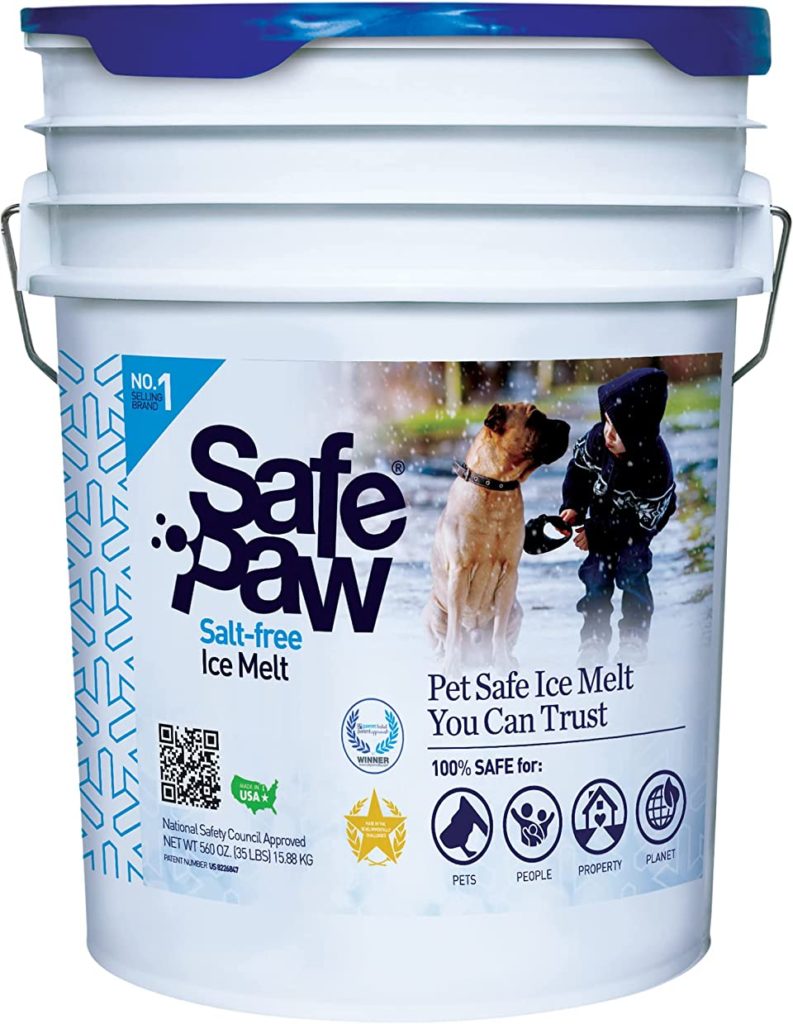
Safe Paw
The Original and the #1 Child and Pet Safe Ice Melt for over 20 years. Guaranteed environmentally safe – will not harm waterways and sensitive wetlands.
The Problem with Residual Chemicals
Another complicating factor is the presence of chemical residue from past winters. Many traditional ice melts, especially rock salt or calcium chloride-based products, are hygroscopic — they draw moisture in and hold it. That means even after they melt snow or ice, some of that moisture is retained near the surface of the concrete.
Over time, this trapped moisture and chemical load can weaken the top layer of concrete. If newer, safer products are applied later (even correctly), they might be blamed for damage that has been developing for years. The deterioration has already begun — the latest product simply revealed it.
How Concrete Quality Contributes
Poor concrete quality is one of the biggest contributors to winter surface damage — and it’s often invisible to the homeowner.
Concrete may be vulnerable if:
- It lacked air entrainment during mixing.
- It was poured and left without being properly “worked” to close the pores.
- It was never sealed or the sealant has worn off.
- It was mixed improperly or not suited to the region’s climate.
Air entrainment is especially important in freeze-prone climates. Without it, the freeze-thaw cycles become far more destructive. Unfortunately, most homeowners don’t know the specifications of their concrete — especially if it was poured by a builder years ago.
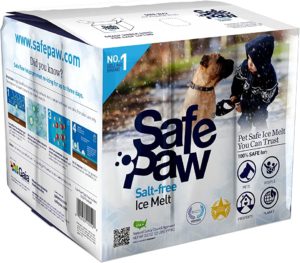
Pet Friendly Ice Melt – Safe Paw!
The Original and the #1 Child and Pet Safe Ice Melt for over 20 years. Guaranteed environmentally safe – will not harm waterways and sensitive wetlands.
What You Can (and Can’t) Know
It’s important to acknowledge that even with careful observation, you may never know exactly what caused the surface damage. It may be one issue or a combination of many.
That’s why prevention is critical:
- Seal your concrete routinely (every 2–3 years in cold climates).
- Use only concrete-safe deicers, especially ones marked safe for air-entrained and older concrete.
- Apply products in small test areas first to check for adverse reactions.
- Avoid over-applying deicers — use the right amount, not more than needed.
Conclusion
Concrete damage isn’t always the fault of a product used today. It’s the result of compounding factors: moisture, temperature shifts, product residues, and unknown concrete quality. When concrete isn’t sealed, wasn’t made with the right air content, or has been exposed to harsh chemicals in the past, it becomes vulnerable to the very forces winter brings every year.
The true cause of damage is rarely just one thing — and almost never the latest product used. It’s the environment, the material, and the history you can’t see.
FAQs: Concrete Damage & Ice Melters
Stay safe and confident this winter with Traction Magic!
This innovative, 100% natural product offers instant traction on any icy surface. Whether you’re navigating your sidewalk, steps, or driveway, Traction Magic helps you stay upright and prevents falls.
Try Our Other Winter Safety Products
Walk On Ice
Prevent slips at home, work or on the go, The handy disposable canister can be taken everywhere, with the same 100% naturally occurring minerals that provide instant traction on ice or snow.
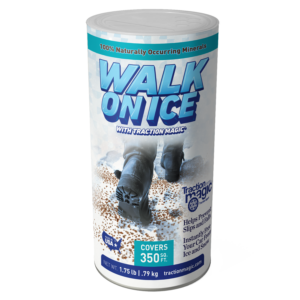
Traction Magic
Stay safe on slippery surfaces with a product that’s 100% natural and safe for pets, people, and your property. Use Traction Magic on sidewalks, steps, or as instant traction for your car.
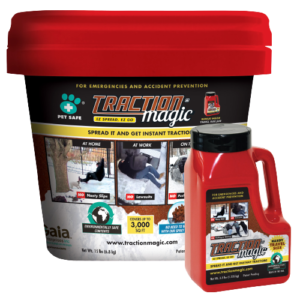
Walk On Ice
Prevent slips at home, work or on the go, The handy disposable canister can be taken everywhere, with the same 100% naturally occurring minerals that provide instant traction on ice or snow.

Safe Thaw
Imagine an ice melt you can put down and never worry about. It won’t harm pets, kids and your property. That’s Safe Thaw. Unlike anything else on the market, Safe Thaw can change how winter affects our planet.
